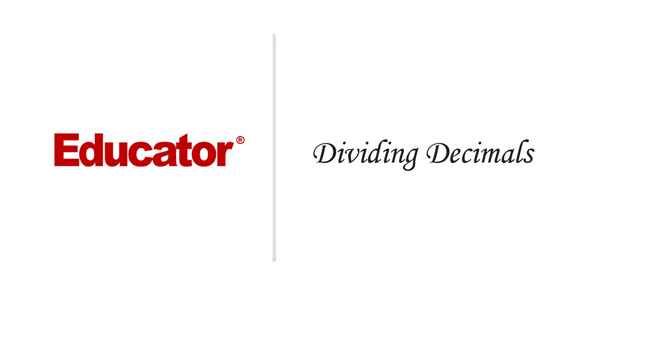
This is a quick preview of the lesson. For full access, please Log In or Sign up.
For more information, please see full course syllabus of Basic Math
For more information, please see full course syllabus of Basic Math
Basic Math Dividing Decimals
Lecture Description
In this lesson our instructor talks about dividing decimals. She talks about the methods and does some examples. Four complete extra example videos round up this lesson.
Bookmark & Share
Embed
Share this knowledge with your friends!
Copy & Paste this embed code into your website’s HTML
Please ensure that your website editor is in text mode when you paste the code.(In Wordpress, the mode button is on the top right corner.)
×
Since this lesson is not free, only the preview will appear on your website.
- - Allow users to view the embedded video in full-size.
Next Lecture
Previous Lecture










































 Answer Engine
Answer Engine



0 answers
Post by Harper Zhang on March 13, 2023
This video really helped with my studies, thank you!
0 answers
Post by Ma Songbo on February 7, 2022
great?
0 answers
Post by Dmitry Kischukov on February 22, 2021
thx it helped so much
2 answers
Last reply by: Dmitry Kischukov
Mon Feb 15, 2021 7:59 AM
Post by Jason Sun on May 7, 2020
I love math
2 answers
Last reply by: Dmitry Kischukov
Thu Feb 18, 2021 8:13 AM
Post by Jason Sun on May 7, 2020
:)
0 answers
Post by jason kang on March 23, 2020
Thanks. It helped me alot.
0 answers
Post by Jared Zhou on July 14, 2019
awesome!!!!!!!!
2 answers
Last reply by: Thomas Dong
Mon Feb 17, 2020 8:33 AM
Post by Anders Jensen on September 8, 2017
77.4/11 is 7.036 .. i think u got mixed up.. but very well explained!!
0 answers
Post by Colton Taylor on March 5, 2014
You explain it so well. Thank you!!!!
5 answers
Last reply by: Mingyang Cen
Wed Aug 15, 2018 8:01 PM
Post by Magesh Prasanna on May 16, 2013
In example 2, the answer was 7.01$ and you said it is seven dollars and one cent but why you didn't say seven dollars and one hundredth cent.
Both the statement mean same?
0 answers
Post by Wasay Ahmad on December 14, 2012
this is really nice i always hated division until now thanks so much
3 answers
Last reply by: Weixuanfu
Wed Jul 29, 2020 5:17 PM
Post by Henry Major on September 10, 2011
I must say these video are very helpful. Thanks
0 answers
Post by Josiah Edem Blood Dzraku on September 5, 2011
you very good. i like how you teach.. it's very simple to understand. makes me want to learn more. i use to never like division but now i do. Thanks
2 answers
Last reply by: Mingyang Cen
Wed Aug 15, 2018 8:02 PM
Post by gaby becerril on February 21, 2011
Why did you move the decimal point behind the 22.